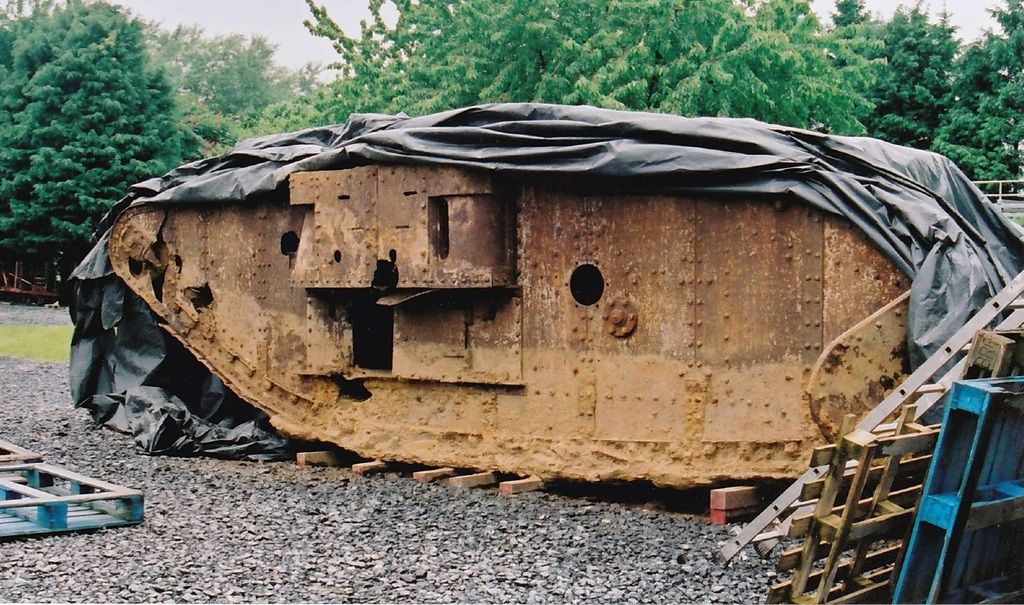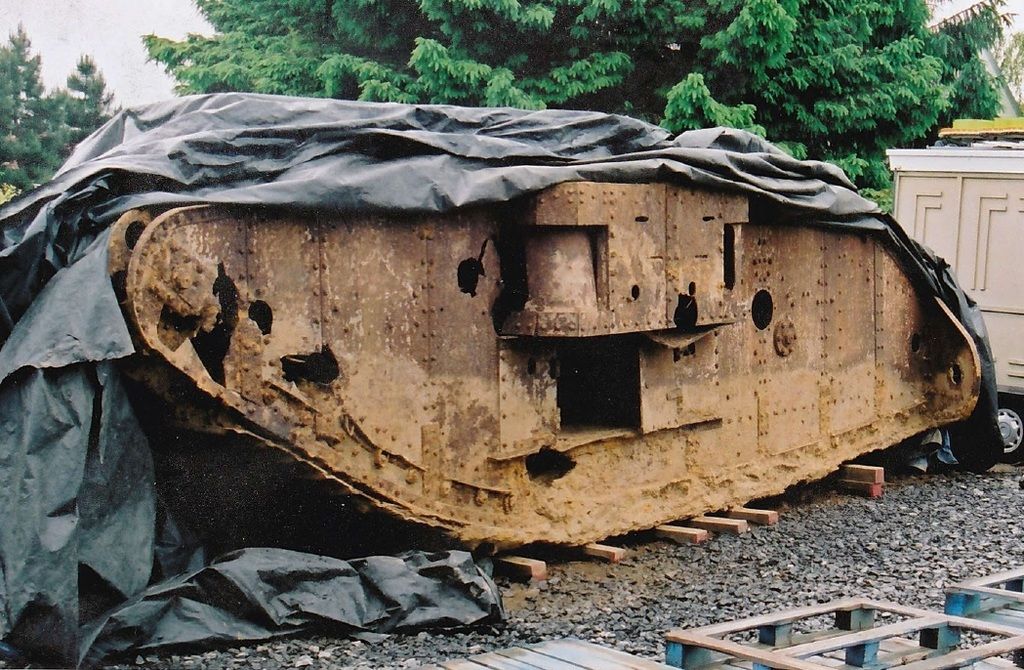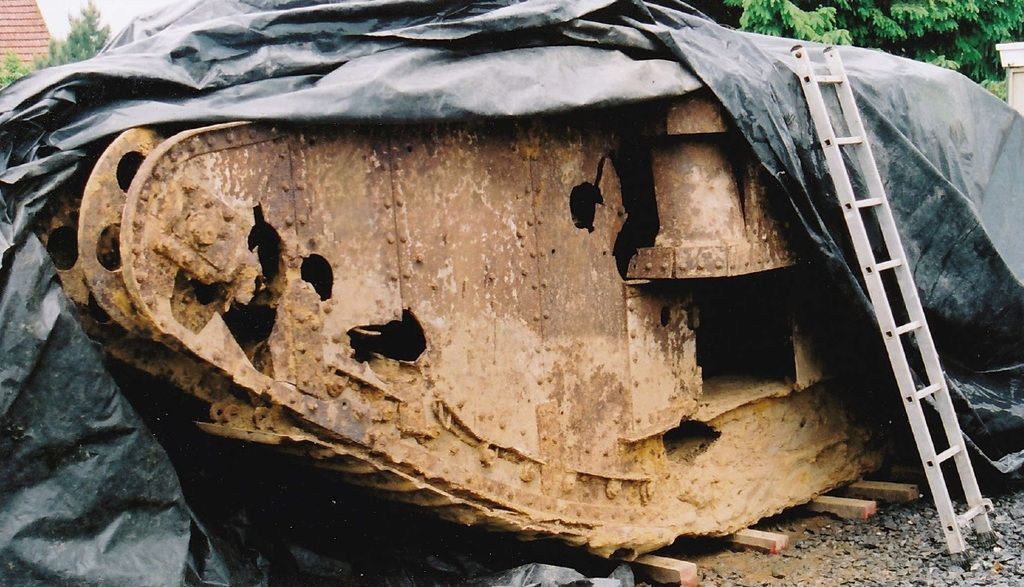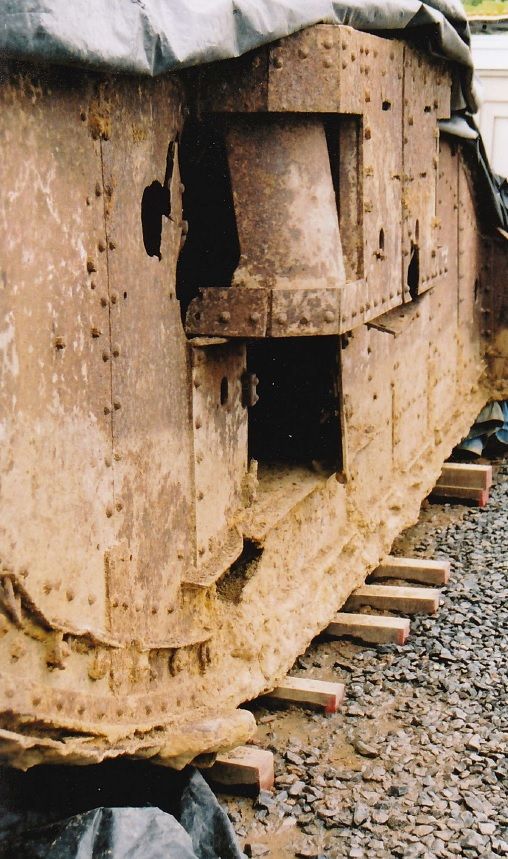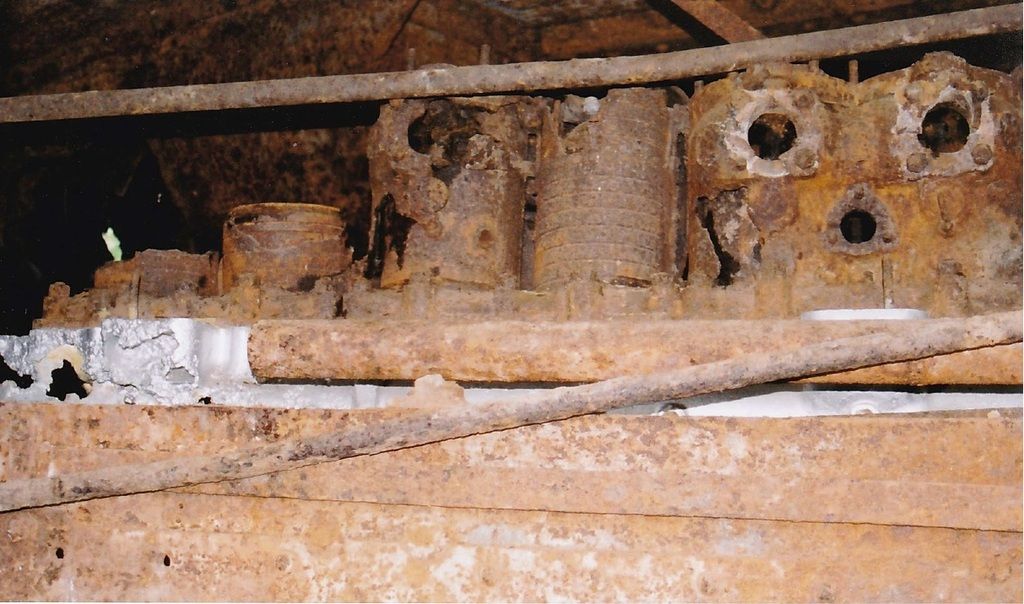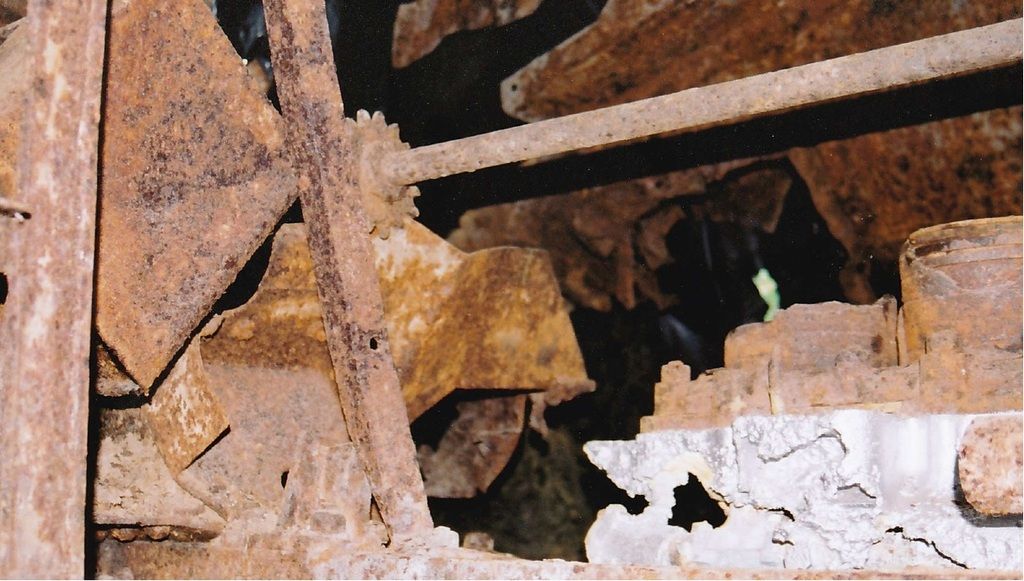A Lady Called Deborah
Posted: Mon May 15, 2017 7:45 pm
November 20th 1917 saw 476 British tanks of the Tank Corps attack the Hindenburg line SW of Cambrai. In one day, they penetrated the multiple lines of prepared defences to a depth which had taken six months the previous summer on the Somme. The tank had come of age.
This is Flesquiers Ridge, which saw some of the fiercest action.
You are standing on the forward British line in the area of D Battalion's start line (the green triangle marked 3 on the map below). You're looking north towards Flesquiers Ridge (the wood on the horizon, marked with the green triangle 2 below). Just beyond the light green field in the middle distance, the tanks would have encountered the Siegfriedstellung, the first line of trenches and wire, hundreds of metres deep. Having fought through these by midday, the second echelon of tanks and the remnants of the first regrouped and attacked the Hindenburg support line, forward of the wood on the horizon. Here the German artillery caused the attack to stall but the tank battalions on either side were able to penetrate beyond the wood and attack the third line.
This map shows the German defences in red and the locations where British tanks were knocked out. It gives a feel for the intensity of fighting.
Why post this now? Well, this year is the centenary of the battle and I was fortunate this weekend to accompany a party of fellow officers of the Royal Tank Regiment, successors to the Tank Corps, to France to pay our respects to the Fallen and to re-visit the battlefield.
More about Deborah follows.
Stephen
This is Flesquiers Ridge, which saw some of the fiercest action.
You are standing on the forward British line in the area of D Battalion's start line (the green triangle marked 3 on the map below). You're looking north towards Flesquiers Ridge (the wood on the horizon, marked with the green triangle 2 below). Just beyond the light green field in the middle distance, the tanks would have encountered the Siegfriedstellung, the first line of trenches and wire, hundreds of metres deep. Having fought through these by midday, the second echelon of tanks and the remnants of the first regrouped and attacked the Hindenburg support line, forward of the wood on the horizon. Here the German artillery caused the attack to stall but the tank battalions on either side were able to penetrate beyond the wood and attack the third line.
This map shows the German defences in red and the locations where British tanks were knocked out. It gives a feel for the intensity of fighting.
Why post this now? Well, this year is the centenary of the battle and I was fortunate this weekend to accompany a party of fellow officers of the Royal Tank Regiment, successors to the Tank Corps, to France to pay our respects to the Fallen and to re-visit the battlefield.
More about Deborah follows.
Stephen
